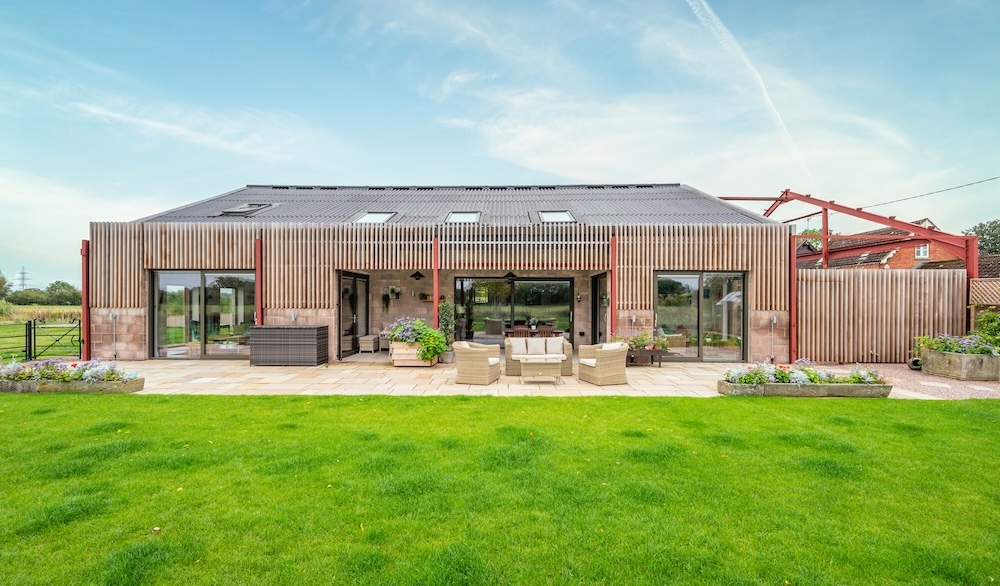Understanding Class Q – A strategic opportunity for landowners
Class Q is a powerful Permitted Development Right (PD Right) available in England, allowing the conversion of agricultural buildings into residential dwellings without the need for a full planning application. For UK farmers and landowners, this legislation offers a valuable tool to diversify income streams and unlock the potential of redundant farm buildings.
To ensure your project is legally compliant, a Class Q Prior Approval application must be submitted to your Local Planning Authority (LPA). If your proposal meets the criteria of the prescriptive terms of the legislation, the LPA must approve it.
Note: Class Q rights do not apply in Wales.
Why this matters to you
If you have barns or outbuildings that are no longer essential to your farming operations, Class Q could turn an idle structure into an asset, whether by selling the building with planning approval or developing it as a long-term source of rental income.
And it’s not just stone barns. Some of the most successful and striking Class Q projects Apex has been involved in are steel-framed sheds – as long as they meet the necessary criteria.

Recent changes to the Class Q legislation
The UK Government has recently updated Class Q regulations. The changes made in May 2024 had a transition period that ended in May 2025. These updates significantly increase the development potential for larger buildings, but come with stricter limits per dwelling:
- Old Rule: Up to 5 dwellings / 865m² total/max 465m² per dwelling
- New Rule: Up to 10 dwellings / 1000m² total/max 150m² per dwelling
This change opens the door to smaller but more numerous homes, ideal for rental, sale, or family accommodation, all while boosting rural housing supply.
What’s the timeline for conversion?
Subject to the complexity of the project, the entire process—from initial concept through to completion—in our experience, typically takes 18 to 24 months.
Here’s our typical breakdown:
- Month 1: Measured surveys, ecology checks, structural appraisal, and initial designs
- Month 2: Third-party reports gathered (e.g. engineer, ecologist*), submission to LPA
- Within 56 Days: Response from LPA on Prior Approval
- Post-Approval: Technical design, Building Regulations application, tendering for contractors
- Construction Phase: Administering contracts and site works, inspections and valuations through to completion
*Timings may change if additional surveys, subject to seasonal restrictions, are required following initial findings
How long does approval last?
Typical planning approvals, which have a timeframe of 3 years (England) or 5 years (Wales) to start the project. However, Class Q legislation differs in that it requires the project to be completed within 3 years.
This is significantly more onerous. In our experience, collaboration with the Structural Engineer, Ecologist, Drainage Engineer, etc, is critical to ensure the efficient delivery of the technical design package, thereby maximising the time available to deliver the conversion itself.
How much will it cost?
Every agricultural building presents unique challenges. However, as a rough guide, here’s what UK landowners might expect:
| Cost Element | Estimated Range (ex. VAT) |
| Planning Consultant | £3,000 – £5,000 |
| Surveying & Architectural Services | £4,000 – £9,000 1 |
| Structural Engineer | £1,500 – £3,500 |
| Ecological Surveys | £500 – £2,500 2 |
| Local Authority Class Q Fee | £516 (set nationally / No VAT) |
| Conversion Build Costs | £3,000 – £3,500 per m² 3 |
2 This is subject to initial findings
3 We advise this as a starting estimate
These figures serve as guidance only. Actual costs will depend on the structure, its location, accessibility, and the intended standard of finish.
A new revenue stream for your farm
Class Q offers UK farmers and rural landowners a unique opportunity to:
- Generate capital by selling buildings with residential consent
- Create rental income from homes built on unused land
- Provide housing for extended family or farm staff
- Add long-term value to your agricultural estate
Final thoughts
With the 2024 Class Q changes now in effect, now is the time to assess whether your redundant agricultural buildings can be converted.
If you’re a UK farmer or landowner with buildings you’re no longer using, this could be your route to new income, greater land value, and a more resilient rural business. To find out more or to book an initial assessment, email enquire@apexarchitectureltd.com or call one of our regional offices:
Gloucestershire Office – 01594 516 161
Monmouthshire Office – 01600 800 101
Cheltenham Office – 01242 650 980
